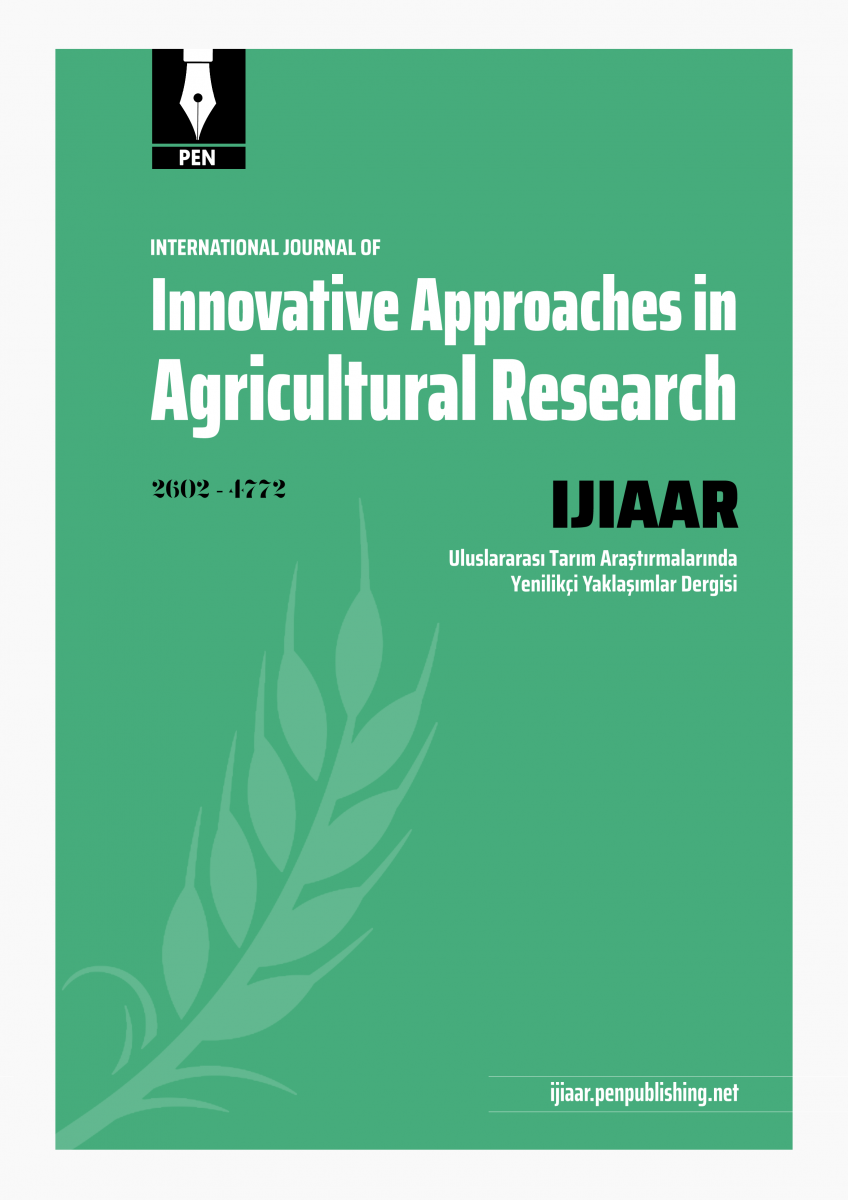- Abdul-Baki, A. A. (1992). Determination of pollen viability in tomatoes. J.Am. Soci. Hortic. Sci. 117, 473-476. [Google Scholar]
- Chatterjee, R., S. Sarkar and G.N. Narsemah Rao. (2014). Improvised Media for in vitro Pollen Germination of some species of Apocynaceae. Int. J.Environ. 3, 146-153. [Google Scholar]
- Clarke, H.J. and H.K.M. Siddique. (2004). Response of chickpea genotypes to low temperature stress during reproductive development. Field Crop Res. 90, 323-334. [Google Scholar]
- Coast, O., A.J.Murdoch, R.H.Ellis, F.R. Hay, and K.S.V.Jagadish. (2015). Resilience of rice (Oryza spp.) pollen germination and tube growth to temperature stress. Plant Cell Environ. DOI: 10.1111/pce.12475 [Google Scholar]
- Das, S., P. Krishnan, M. Nayak and M.B. Ramakrishnan. (2014). High temperature stress effects on pollens of rice (Oryza sativa L.) genotypes. Environ Exp Bot. 2014. 101: 36-46. [Google Scholar]
- Dane, F.,A.G. Hunter, and O.L. Chambliss. (1991). Fruit set, pollen fertility, and combining ability of selected tomato genotypes under high-temperature field conditions. J. Am. Soci. Hortic. Sci. 116: 906-910. [Google Scholar]
- Dudley, J.W., and R.H. Moll. (1969). Interpretation and use of estimates of heritability and genetic variances in plant breeding. Crop Sci 9: 257-262. [Google Scholar]
- Frescura, V.D., H.D. Laughinghouse, and T.S.Cantodorow. (2012). Pollen viability of Polygala paniculata L. (Polygalaceae) using different staining methods. Bio Cell 36: 143-145. [Google Scholar]
- Fu, G. F., S. Jian, J.Xiong, Y.R. Li, H.Z. Chen, M.K. Le, and L.X. Tao. (2011). Changes of oxidative stress and soluble sugar in anthers involve in rice pollen abortion under drought stress. Agric. Sci. China 10: 1016-1025. [Google Scholar]
- Gaaliche, B.,A. Majdoub, M. Trad, and M. Mars. (2013). Assessment of pollen viability, germination, and tube growth in eight Tunisian caprifig (Ficus carica L.) Cultivars. ISRN Agron. [Google Scholar]
- Harsant, J., L. Pavlovic, G. Chiu, S. Sultmanis, and T.L. Sage. (2013). High temperature stress and its effect on pollen development and morphological components of harvest index in the C3 model grass Brachypodium distachyon. J. Exp. Bot. 142-152. [Google Scholar]
- Hallauer, A.R., M.J. Carena, and J.D. Miranda. (2010). Testers and combining ability (pp. 383-423). Springer New York. [Google Scholar]
- Huang, Z., J. Zhu, X. Mu and J. Lin. (2004). Pollen dispersion, pollen viability and pistil receptivity in Leymus chinensis. Annal Bot. 93, 295-301. [Google Scholar]
- Ilgin, M., F. Ergenoglu, and S. Caglar. (2007). Viability, germination and amount of pollen in selected caprifig types. Pak. J. Bot. 39: 1-9. [Google Scholar]
- Kalyar, T., S. Rauf, J.A.T. da Silva, S. Haidar, and Z.Iqbal. (2013). Utilization of leaf temperature for the selection of leaf gas-exchange traits to induce heat resistance in sunflower (Helianthus annuus L.). Photosynthetica. 51: 419-428. [Google Scholar]
- Kalyar, T., S. Rauf, J.A.T. Teixeira Da Silva, and M.Shahzad. (2014). Handling sunflower (Helianthus annuus L.) populations under heat stress. Arch. Agronomy Soil. Sci. 60, 655-672. [Google Scholar]
- Kempthorne, O. (1957). An introduction of genetic statistics, John Willey & Sons Inc. New York, USA, pp. 468-473. [Google Scholar]
- Murthy, M.N.K., Y.A.N. Reddy and K. Viruakshappa. (1994). Development of suitable germination medium for trinucleate pollen grains. An illustration with sunflower. J. Oilseeds. Res. 11(2):304-307. [Google Scholar]
- Nguyen, C. T., V. Singh, E. van Oosterom, D. Jordan, S. Chapman, and G. Hammer. (2012). High temperature effects on development and floret sterility of diverse sorghum lines. In 16th Australian Agronomy Conference. Australian Society of Agronomy. [Google Scholar]
- Nguyen, G.N., and B.G. Sutton. (2009). Water deficit reduced fertility of young microspores resulting in a decline of viable mature pollen and grain set in rice. J. Agron. Crop Sci. 195, 11-18. [Google Scholar]
- Nguyen G.N., and B.G. Sutton. (2009). Water Deficit Reduced Fertility of Young Microspores Resulting in a Decline of Viable Mature Pollen and Grain Set in Rice. J. Agron. Crop Sci. 195: 11–18. [Google Scholar]
- Nguyen, H.T, and Blum, A. (Eds.). (2004). Physiology and biotechnology integration for plant breeding. CRC Press. [Google Scholar]
- Patel, R.G.,and A.U. Mankad. (2014). In Vitro Pollen Germination: A Review. Int. J. Sci. Res. 3, 304-307. [Google Scholar]
- Pressman, E., M. M. Peet, and D. M. Pharr. (2002). The effect of heat stress on tomato pollen characteristics is associated with changes in carbohydrate concentration in the developing anthers. Annals Bot. 90: 631-636. [Google Scholar]
- Rauf, S. (2008). Breeding sunflower (Helianthus annuus L.) for drought tolerance. Commun. Biom. Crop Sci. 3: 29-44. [Google Scholar]
- Rodriguez-Riano, T., and A. Dafni. (2010). A new procedure to asses pollen viability. Sex. Plant Reprod. 12: 241-244. [Google Scholar]
- Sarhadi, E., M.M. Bazargani, A.G. Sajise, S. Abdolahi, N.A. Vispo, M.Arceta, and G.H. Salekdeh. (2012). Proteomic analysis of rice anthers under salt stress. Plant Physiol Bioch. 58, 280-287. [Google Scholar]
- Schoper, J.B., R.J.Lambert, and B.L. Vasilas. (1987). Pollen viability, pollen shedding, and combining ability for tassel heat tolerance in maize. Crop Sci. 27: 27-31. [Google Scholar]
- Satish, D.,and R.L. Ravikumar. (2010). Standardization of in vitro pollen germination media in selected varieties of cotton and tomato. Karn. J Agric. Sci. 2010. 23:317-319. [Google Scholar]
- Sato, S. M.M.Peet, and J.F.Thomas. (2002). Determining critical pre‐and post‐anthesis periods and physiological processes in Lycopersicon esculentum Mill. exposed to moderately elevated temperatures. J. Exp. Bot. 53: 1187-1195. [Google Scholar]
- Sulusoglu, M., and A. Cavusoglu (2014). In Vitro Pollen Viability and Pollen Germination in Cherry Laurel (Prunus laurocerasus L.). Scient. World J. 5:161-169. [Google Scholar]
- Vaughton, G., and M. Ramsey. (1991). Floral biology and inefficient pollen removal in Banksiana spinulosa var. neoanglica (Proteaceae). Aust. J. Bot.39,167-77 [Google Scholar]
- Verhoeven, K.J.F., J.L. Jannink and L.M. McIntyre. (2006). Using mating designs to uncover QTL and the genetic architecture of complex traits. Heredity. 96, 139-149. [Google Scholar]
|

